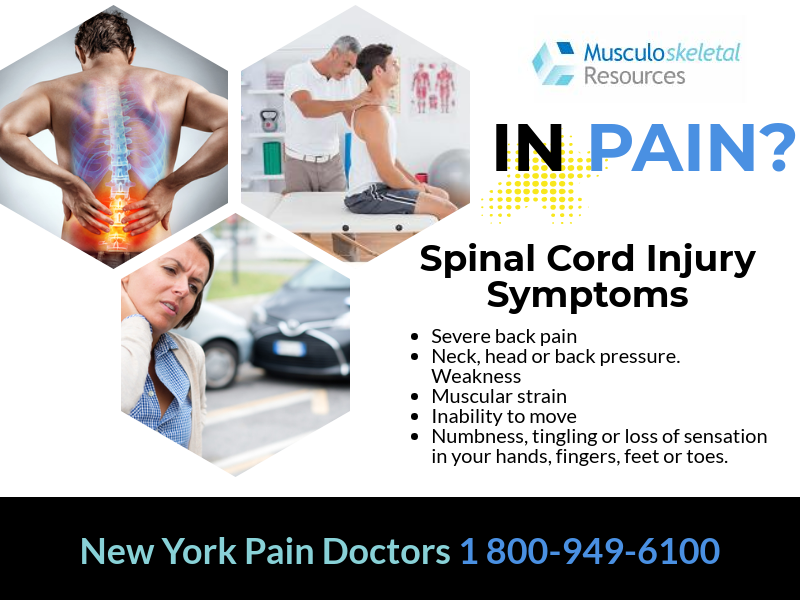MS Pain Explained – The Connection To the Spine
Multiple sclerosis (MS) is a disease in which the immune system eats away at the protective covering of nerves. MS affect the entire body. Aches in your bones, joints, and muscles. Burning pain in the feet, legs, arms, hips. Finding the right physical therapist to help someone with MS can be a challenging.
Multiple sclerosis (MS) attacks on the spine has a predilection for the cervical spinal cord (67% of cases), with preferential, eccentric involvement of the dorsal and lateral areas of the spinal cord abutting the subarachnoid space around the cord. Approximately 55 to 75% of patients with MS have spinal lesions at some point during the course of the disease.
For those with MS pain below the level of spinal cord involvement and sexual problems were the greatest complaints, even when there were motor difficulties in the limbs. Spinal cord pain is typically excruciating and often shoots down the spine or to the limb that is involved due to spinal cord damage.
MS Pain? Consider Seeing a Physiatrist?
What is a Physiatrist? Physical Medicine and Rehabilitation (PM&R) doctors, also known as physiatrists, treat medical conditions affecting the brain, spinal cord, nerves, bones, joints, ligaments, muscles, and tendons.
PM&R physicians are medical doctors who have completed training in the specialty of Physical Medicine and Rehabilitation (PM&R), and may be subspecialty certified in Brain Injury Medicine, MS, Spinal Cord Injury, Pain Management or any other number of neurological related conditions. The role of a Physiatrist is to intersect between all the specialists related to your condition.
Physiatrist have the ability to recommend specialists on areas such as neurology, urology, pain management, rehabilitation and more. They can easily identify areas that I might want to focus on and have excellent medical professionals to refer you to.
Physiatrists can make life changing recommendations on how to manage pain. If you find yourself frustrated that your physician is too specific to their specialty, you may want to consider seeing a Phystriast. Just reach out to your local injury and pain rehabilitation clinic. They will be able refer you to a pain specialist in MS.
Pain | MS Trust
https://www.mstrust.org.uk/a-z/pain

Pain doctors helping patients develop a pain management plan
The Human Nervous System
The human nervous system consists of two distinct parts: the first being the central nervous system (CNS) which refers to the brain and spinal cord together and the second is the peripheral nervous system (PNS) which refers to the cervical, thoracic, lumbar, and sacral nerve trunks leading away from the spine to the limbs.
There are three types of nerves, or neurons, in the body:
| Autonomic nerves – These nerves control the involuntary or partially voluntary activities of your body, including heart rate, blood pressure, digestion, and temperature regulation.
Motor nerves – These nerves control your movements and actions by passing information from your brain and spinal cord to your muscles. Sensory nerves – These nerves relay information from your skin and muscles back to your spinal cord and brain. The information is then processed to let you feel pain and other sensations. |
Nerve pain and nerve damage can be mild. But, because nerves are essential to all you do, nerve pain and damage can seriously affect your quality of life.
Therapy For Loss of Function
Commonly experienced permanent neurological deficits resulting from TM may include severe weakness, spasticity (painful muscle stiffness or contractions), or paralysis; incontinence; and chronic pain. Such deficits can substantially interfere with a person’s ability to carry out everyday activities such as bathing, dressing, and performing household tasks.
Many forms of long-term rehabilitative therapy are available for people who have permanent disabilities resulting from TM. Rehabilitative therapy (physical therapy used to alleviate sources of chronic pain)teaches people strategies for carrying out activities in new ways in order to overcome, circumvent, or compensate for permanent disabilities.
Today, most rehabilitation programs attempt to address the emotional dimensions along with the physical problems resulting from permanent disability. Patients typically consult with a range of rehabilitation specialists, who may include physiatrists (physicians specializing in physical medicine and rehabilitation), physical therapists, occupational therapists, vocational therapists, and mental health care professionals.
Resources:
-
- Nervous System Damage
https://my-ms.org/anatomy_nerve_damage.htm - Physical Therapy
https://multiplesclerosis.net/treatment/physical-therapy/ - Structure of the Nervous System:
web.mst.edu/~rhall/neuroscience/02_structure_and_pharmacology/structure.pdfExperts usually describe pain caused by MS as musculoskeletal, paroxysmal or chronic neurogenic. Musculoskeletal pain can be due to muscular weakness, spasticity and imbalance. It is most often seen in the hips, legs and arms and particularly when muscles, tendons and ligaments remain immobile for some time. Nov 10, 2016
- MS Pain | Multiple Sclerosis – MS International Federation
MS is the most common inflammatory demyelinating disease of the central nervous system (CNS) in humans. Between 50 and 100 per 100,000 Caucasians (lower in other ethnic groups) are afflicted with this disease, and women are afflicted more than men at a ratio of about 2:1. Onset usually occurs between the ages of 20 and 40 years. Clinical features of MS include alterations in vision, sensory and motor disturbances and cognitive impairment.
- Pain
https://www.my-ms.org/med_symptom.htmPain is an under appreciated symptom of MS. Over half of MS patients complain of pain and, in a substantial fraction, the pain is described as severe, at least at times. MS-related pain can be experienced as jolts of electricity, continuous dull burning, disagreeable tingling, or raw sensations. An improved understanding of the mechanisms that produce pain of central origin has produced several successful approaches to its management, including the anticonvulsant drugs, the antidepressant drugs, or the anti-arrhythmic drugs. If these treatments are unsuccessful, some patients may respond to a comprehensive pain management program.
- Spine Injury Doctors New York
https://painandinjury.com/diagnosingpain/musculoskeletalsystem/spine.html
Spine specialists New York doctors providing non-surgical treatment plans for back pain, neck pain, from spinal cord injury. MS: Find-out The Benefits of Engaging a Physiatrist.

Spine Injury – MS: Benefits of Seeing a Physiatrist
- Spinal Cord Damage & InjuryThe spinal column is made up of 33 vertebra and protects the spinal cord from injury. If these bones are broken or damaged, paralysis isn’t necessarily the result once the bones are stabilized. Therefore, a person may break his or her back or neck without suffering paralysis. It’s when the damage reaches the spinal cord that serious, long-term or permanent effects often result. The extent and region of the body affected by this damage depends upon the region of the spinal cord that is injured.The spinal column and spinal cord consist of four regions, with each region controlling a particular part of the body. These regions can be categorized even further into 31 pairs of peripheral spinal nerves. These nerve pairs extend from the spinal cord through spaces in the vertebra, connecting the spinal cord with other nerves throughout the PNS. In general, the higher the spinal cord is injured, the more severe the injury. The regions of the spine are numbered in descending order from the brain.
Cervical Region (C1 to C8)
Located in the neck, this region controls the back of the head, the neck, shoulders, arms, hands, and diaphragmThoracic Region (T1 to T12)
This region is located in the upper back and controls the torso and parts of the armsUpper Lumbar (L1 to L5)
Located in the middle of the back just below the ribs. The upper lumbar region controls the hips and legsSacral Segments (S1 to S5)
Just below the upper lumbar region in the middle of the back. This region controls movement in the groin, toes, and some parts of the legRelated Organizations and Publications Disability Rights
- Nervous System Damage
-
- The Americans with Disabilities Act
http://www.ada.gov - U.S. Labor Department Equal Employment Opportunity Commission
http://www.eeoc.gov - Family and Medical Leave Act (FMLA)
http://www.dol.gov/whd/fmla/ - Disability Evaluation Under Social Security (The Blue Book)
http://www.ssa.gov/disability/professionals/bluebook - Social Security Planner
http://www.ssa.gov/dibplan - Disability.gov
http://www.Disability.gov
- The Americans with Disabilities Act

